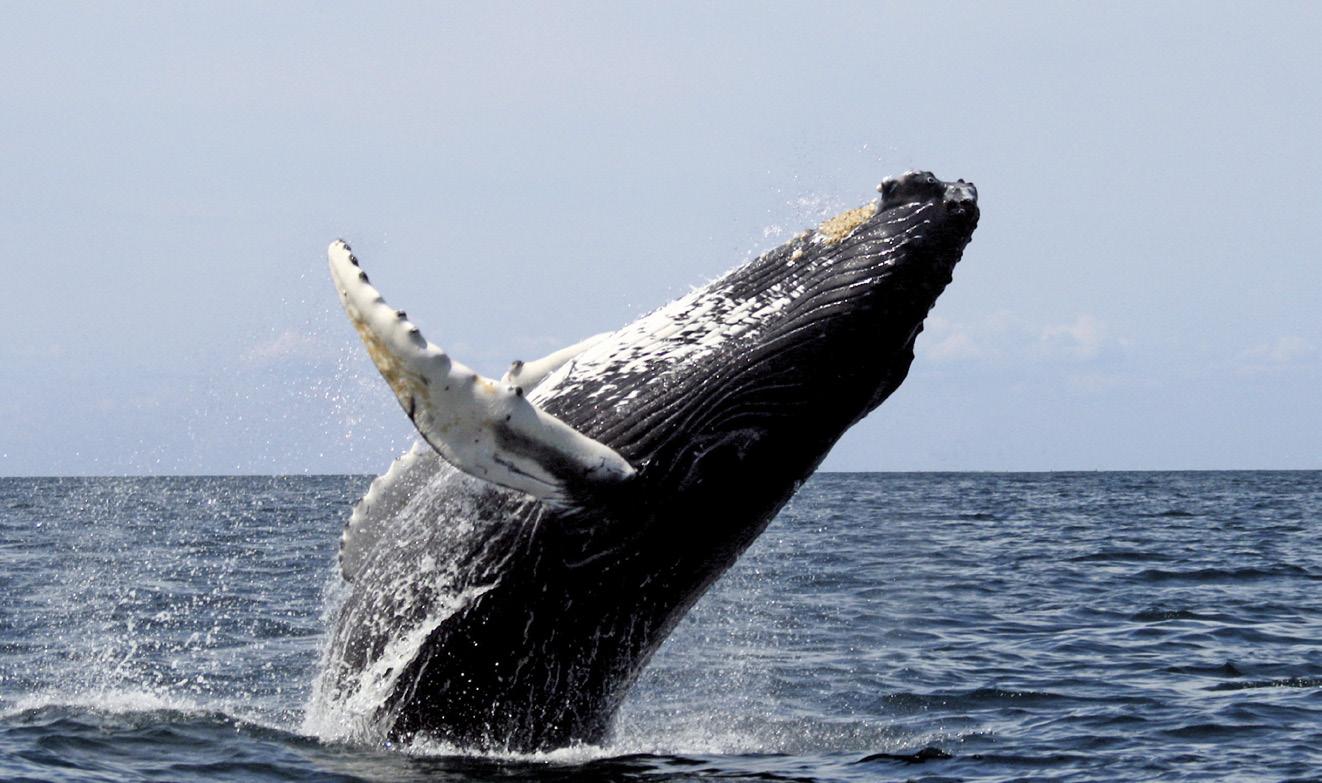
2 minute read
Record Number of Whales Seen in the Salish Sea in 2022
Boaters are likely to view many more whales in 2023 after a record number of sightings this past year in the Salish Sea. In 2022, Bigg’s orcas, who travel between Mexico and Alaska, were seen by whale watching companies on 278 days, while humpbacks were sighted on 274 days between Campbell River and Puget Sound. Alert Bay-based Bay Cetology, a non-profit that studies cetacean populations, reported that the Bigg’s orca count had increased to 370, with
10 new calves born in 2022.
Advertisement
Bigg’s orcas were formerly known as transient orcas, or transient killer whales; their new name honours Dr. Michael Bigg, the Vancouver Island pioneering marine biologist whose research started the study of the different orca species.
Bigg’s orcas feed on seals, sea lions, other marine mammals and squid and there seem to be enough of these animals for the orcas to hunt and eat. Humpbacks also continued their comeback after being nearly hunted to extinction for their valuable oil. The 1986 ban on commercial whaling has allowed for the humpbacks’ resurgence. Researchers with the Canadian Pacific Humpback Collaboration just announced in a news release that “396 individual humpback whales were photographed in the Salish Sea over the course of the 2022 season, the highest number documented in a single year for at least the past century. It appears that the food supply is plentiful helping to sustain these massive mammals.” The Collaboration also reported that of the whales photographed last year, most of them have returned repeatedly to the Salish Sea, thus showing they have clear preferences for where they choose to feed.
The news isn’t that good for the northern and southern resident orcas. The three northern clans number around 250, but the southern families who stay around south Vancouver Island, the Gulf Islands and the San Juans only number 70. They are endangered because their main diet of chinook, chum and coho salmon has declined, and the region’s heavy traffic and pollution also decrease their ability to breed and survive.

Yachties may well see increased numbers of different whales this year. But be warned. Washington law requires vessels to give southern resident orcas (the most endangered community) at least 300 yards (275 metres) of space. Boaters are also required to be at least 400 yards (365 metres) out of their path, or behind them.




For British Columbia, the federal Fisheries Act stipulates boaters must keep 100 metres away from all whales, dolphins and porpoises or 200 metres away if they are resting or with a calf. In addition, give a scope of 200 metres to killer whales. For the waters from Campbell River south to Ucluelet, the rules are even stricter: you must keep 400 metres away from all killer whales. And it’s not just a warning. A Prince Rupert diver who got way too close by trying to swim with orcas was fined $12,000.


—Marianne Scott
BY ROXANNE DUNN










